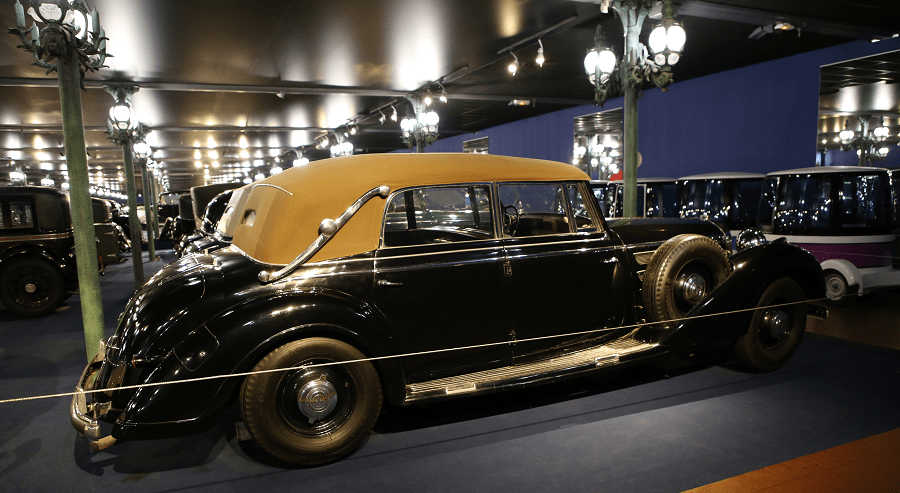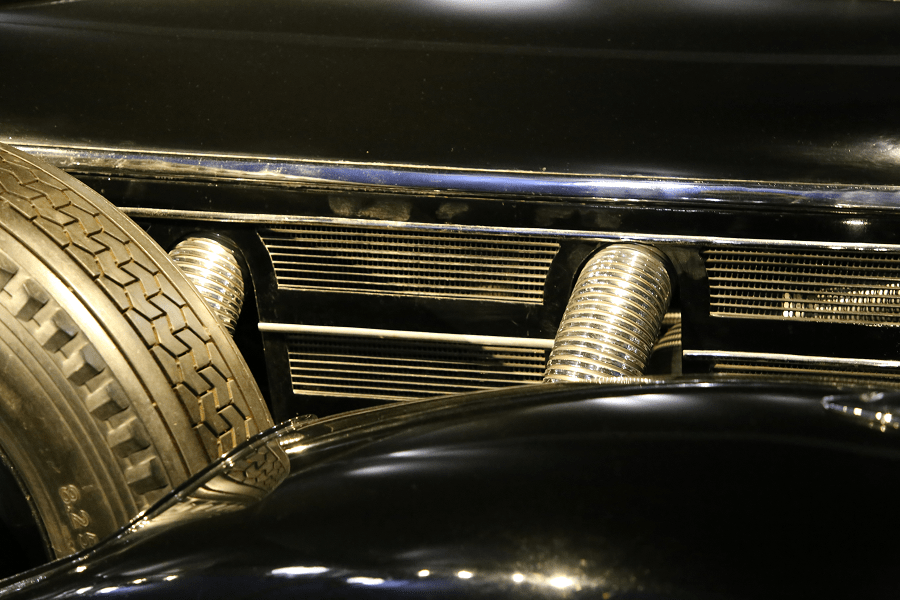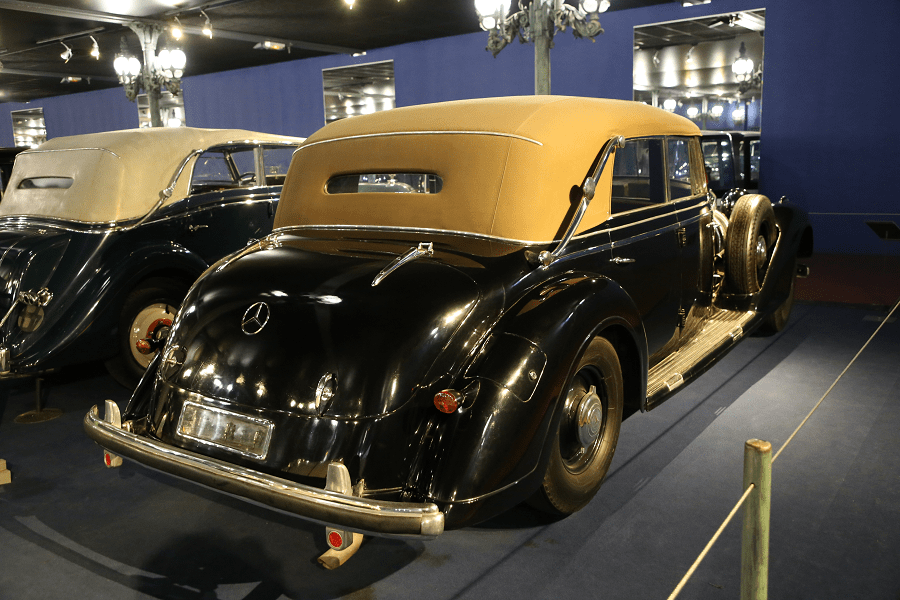The Mercedes-Benz 770, also known as the Großer Mercedes (German for “Big Mercedes”), was a large luxury car built by Mercedes-Benz from 1930 until 1944.
It is probably best known from its use by high-ranking Nazi German politicians and other Axis officials before and during World War II.
Series II – W150 (1938–1944)
The 770 was substantially revised in 1938, resulting in the new internal designation of W150. The new chassis was made with oval section tubes and was suspended from coil springs all around, with independent suspension at front and a de Dion axle at the rear. Hydraulic brakes were fitted, compared to the servo-assisted mechanical brakes of the prior series.
The engine had the same basic architecture as that of the W07, but had been tuned to produce 155 bhp (116 kW) at 3000 rpm without supercharging and 230 bhp (172 kW) at 3200 rpm with. The transmission now had five forward ratios with a direct fourth gear and an overdrive fifth. Top speed was around 170 km/h (106 mph). A twin-supercharged 400 hp (298 kW) model was available, able to reach a top speed of around 190 km/h (118 mph). A total of five were made.
Eighty-eight W150-series cars were built before chassis production ended in 1944. The last cars were bodied and delivered in March 1944.
Some cars of this model were offered by Hitler as gifts to his allies, namely: Marshal Ion Antonescu of Romania, Benito Mussolini of Italy, Francisco Franco of Spain, Marshal Carl Gustaf Emil Mannerheim of Finland and Emil Hácha of the Bohemian Protectorate. Marshal Antonescu’s car, for instance, was bulletproof.















